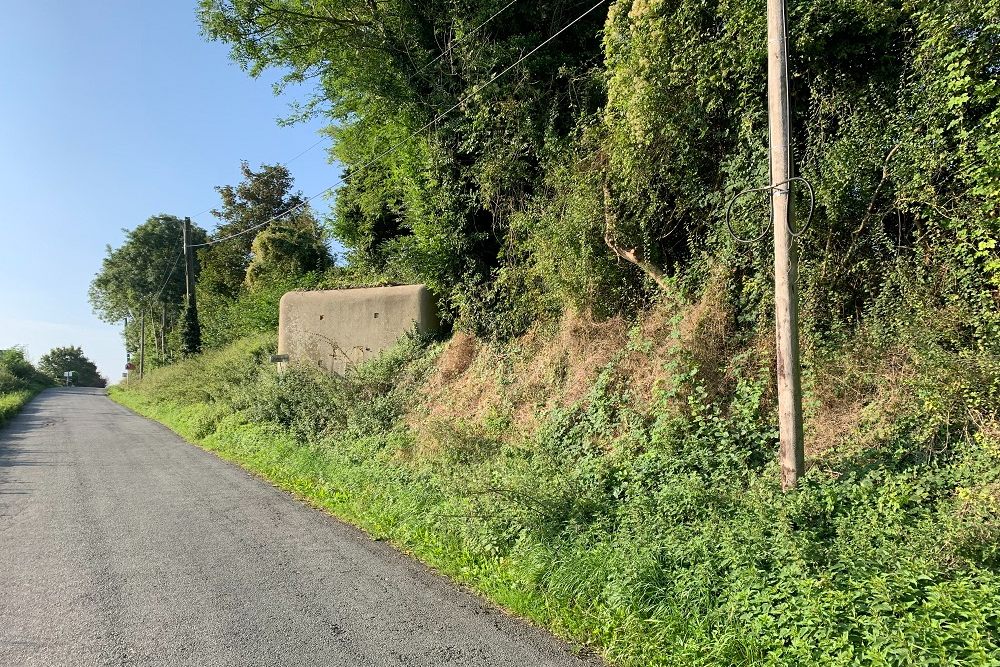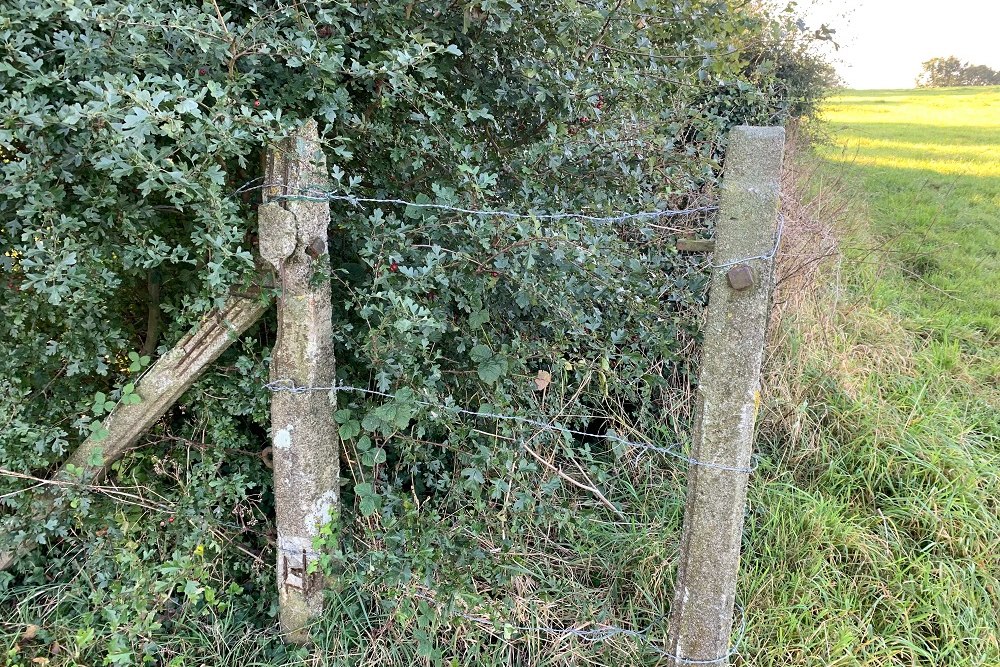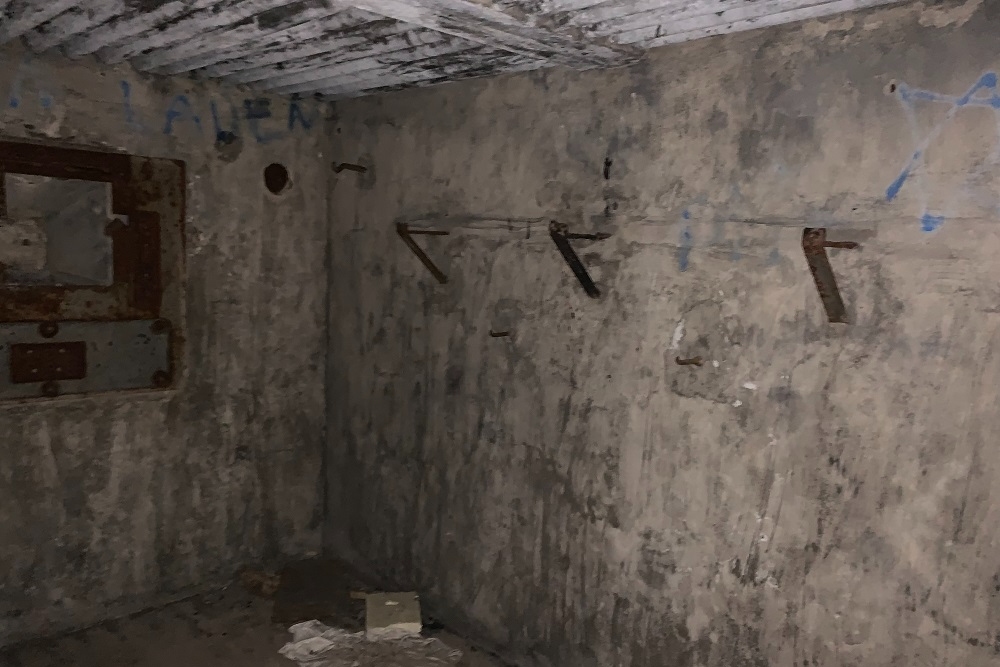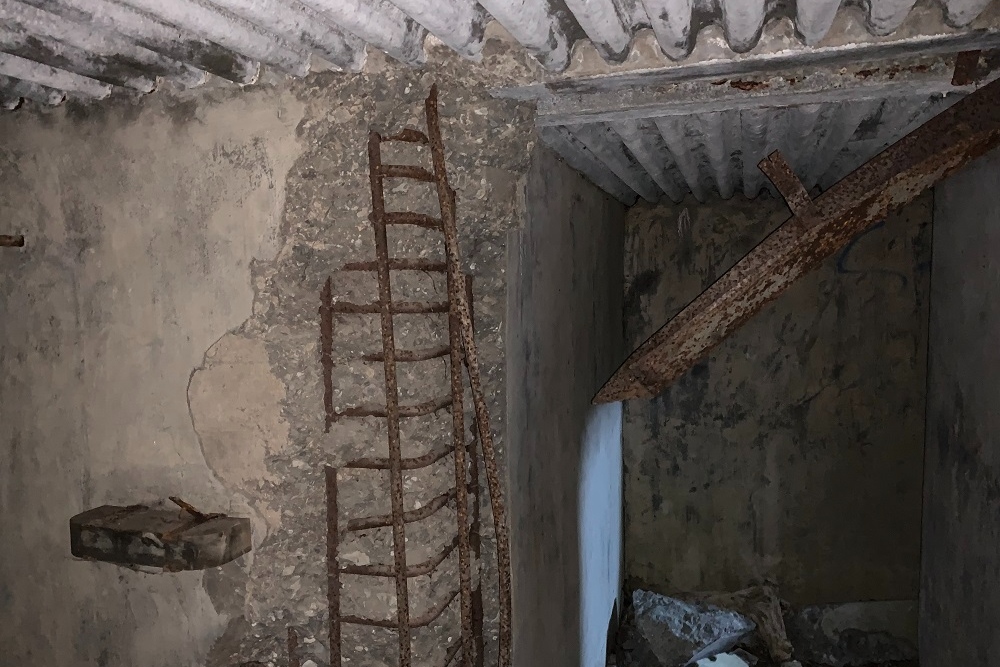Bunker MN 28 Charneux
This is bunker MN 28 of the PFL 1, the 1st line of defense of the 'Position Fortifiée de Liège'.
MN refers to the sector 'Les Margarins-Neufchâteau' where it is the 28th of a total of 31 bunkers. This bunker is located near bunker MN 29 which is a little higher up the hill.
During the German invasion on May 10th, 1940, this bunker, unlike bunker MN 29, was not occupied. The Germans used this bunker as a base to eliminate bunker MN 29. Among others, several attempts were made from bunker MN 28 to disable bunker MN 29. From the concrete stairs leading to the entrance of the bunker, they had a perfect covered position to hold bunker MN 29 under fire with a machine gun.
The bunker is located against a ridge and has become overgrown with bushes and trees over the years. The bunker was bricked up, but was later breached open. A concrete staircase down the hill leads to the entrance. The bunker used to be equipped with two steel doors, but they were sold as scrap after the war, just like the rest of the iron of the hatches. However, a part of the gun plate on the inside is still present. These are usually also completely removed. Shelf carriers and equipment carriers are also still present. Also the small shelf (photo 5) on which one could attach a hand-operated mechanism (such as a glue clamp) and where cartridge bands could be filled with bullets.
Also part of the original fence of concrete posts with barbed wire is still present. The one in front of the entrance should have had an iron gate, but that too has been sold as a shot. The entrance is now fenced off with barbed wire.
As general information, this bunker like most bunkers of the PFL are made of reinforced concrete and were built in the early 1930s. The walls and ceiling are 1.30 m thick. They had to withstand shelling with 150mm shells. Only the walls at the rear are slightly less thick, because in principle they were not exposed to enemy fire.
The holes above and below the gun opening served for ventilation. When both doors of the bunker were closed and the machine gun was firing, the smoke had to get out quickly and fresh air brought in. That is what these ventilation holes, in addition to the gun opening, served for. They are laid out in the concrete in such a way that they do not have a straight connection from outside to inside. They run through the concrete in the shape of a periscope, so to say.
When the bunkers lost their strategic value for the defense of Belgium after the war, the metal of the hatches and doors was sold as scrap metal. Most of the plots on which they stood were also sold. Bunker MN 28 now sits in a meadow.
Do you have more information about this location? Inform us!
Source
- Text: Ed Lewandowski
- Photos: Ed Lewandowski
- https://18daagseveldtocht.be
- La Position Fortifiée de Liège, Coenen & Vernier
Nearby
Museum
- Museum of the Fort Aubin-Neufchâteau - Neufchâteau (Dalhem)
- Remember Museum 39-45 - Thimister-Clermont
- Historical Museum d’Ensival - Verviers
Point of interest
Monument
- Memorial Observation Post MN29 - Charneux (Herve)
- Commemorative Plate Second World War Charneux - Charneux (Herve)
- Monument Protecting Virgin of 14 May 1940 Charneux - Charneux
Cemetery
- Belgian War Graves Charneux - Charneux (Herve)
- Belgian Graves Veterans La Minerie - La Minerie (Thimister-Clermont)
- Belgian War Graves Aubel - Aubel
Remembrance Stone
Fortification
- Observation Post MN29 - Charneux (Herve)
- Bunker MN 30 Champiomont - Champiomont (Herve)
- Defense Bunker MN6 - Herve









